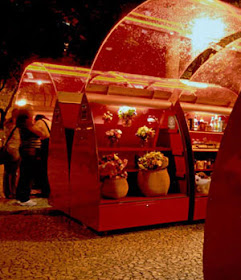Favela. From socialnojornalismo.com.br
I´ve selected a couple of questions and answers regarding the environmental clean up work and portable streets, but the full interview is a ¨must read¨:
Jaime Lerner
¨Beginning in 1971, Jaime Lerner was elected Mayor of Curitiba, re-elected two more times, and then served as Governor of Paraná, Brazil. Lerner has won a number of major awards for his transportation, design, and environmental work, including the United Nations Environment Award; the Prince Claus Award, given by the Netherlands; and the Thomas Jefferson Foundation Medal in Architecture, given by the University of Virginia. In 2002, Lerner was elected president of the International Union of Architects.
Fisherman onshore collecting garbage. Image credit: Jaime Lerner Associated Architects
When you were mayor of Curitiba, you devised a number of low-cost solutions that turned your city into a model green community where people also have incomes 60 percent higher than the Brazilian average. What kind of investments did you make in green space? What do you see as the relationship between livability and sustainability?
If you want creativity, cut one zero from your budget. If you want sustainability, cut two zeroes from your budget. And if you want solidarity, assume your identity and respect others’ diversity. There are three main issues that are becoming important, not only for your city, but for the whole of mankind. These relate to three key issues in cities: mobility, sustainability, and tolerance (or social diversity).
On infrastructure, there’s always the assumption that the government has to provide public transport. Every time we try to create a solution, we have to have a good equation of co-responsibility with the public. That means it’s not a question of money and it’s not a question of skill; it’s how do we organize your equation of co-responsibility?
For example, when I was governor we had to work hard to avoid reduce pollution in our bays. Of course, it’s very expensive to do environmental clean-up work and we didn’t have the money. Another region had taken out a huge loan from the World Bank, about $800 million. For us though, the question wasn’t about money; the question was about mentality. We didn’t have that money so we started to clean our bays through an agreement with fishermen. If the fisherman catches a fish, it belongs to him. If he catches garbage, we bought the garbage. If the day was not good for fishing, the fishermen went to fish garbage. The more garbage they catch, the cleaner the bays became. The cleaner the bay is, more fish they would have. It that’s kind of win-win solution we need. We need to work with low-cost solutions. And, of course, in public transport, we also organized a good equation of co-responsibility with the public.
You were also known for innovations in the delivery of city services. One program to clean up dirty, narrow streets that were inaccessible to trash collectors gave residents bags of groceries or transit passes in return for their garbage. You decentralized garbage collection. How well did this program work? Have other cities taken up this approach?
It’s been working for more than 20 years in Curitiba. In many cities, there are places where it’s difficult to provide trucks access to collect garbage. In many cities, if the slums are on the hills or deep in valleys, they’re difficult to access. In these places, people are throwing away their garbage and polluting the streams. Their children are playing in polluted areas. In 1989, we started a program where we said, Okay, we’re going to buy your garbage as long as you put your garbage in a bag, and bring it to the trucks, where it’s more accessible. In two or three months, all these areas were clean, and these very low-income people had an additional source of income.
We also started a public education programs on the separation of garbage because we realized that we could transform one problem if we separated garbage in every household. We started teaching every child in every schools. Children taught their parents. Since then, Curitiba had the highest rate of separation of garbage in the world for more than 20 years. Around 60 or 70 percent of families are separating their garbage at home.
Portable Streets. Image credit: Jaime Lerner Associated Architects
At the street level, you’ve been experimenting with portable streets, which you say can enable vendors to set up easily anywhere, creating informal and spontaneous market street life. Why do we need this infrastructure?
Some places in some cities have become decayed. There’s no life. When that happens, it’s very difficult to bring back life because people don’t want to live in a place like that. However, the moment we bring street life, people will want to live there again. That’s why we designed the portable streets. On a Friday night, we can deliver a portable street and remove it Monday morning. We can put a whole street life in front of a university or any place, bringing street life back.
Read the full interview at The Dirt:




No comments:
Post a Comment